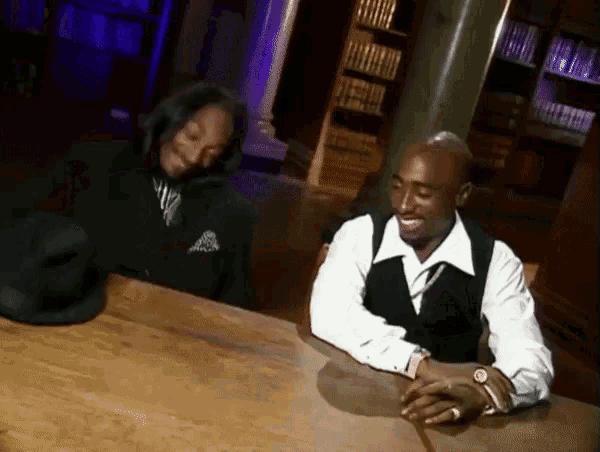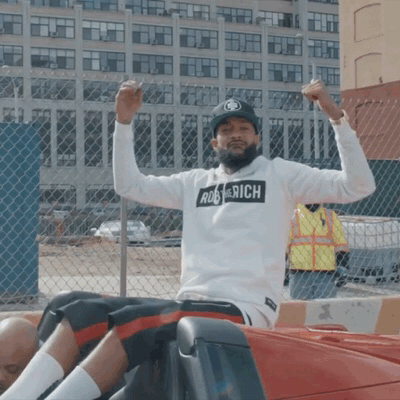Can you post the article? NY Times blocked me few months ago.
LOS ANGELES — The memory of the rapper Nipsey Hussle still looms large over Los Angeles. On one mural, his spray-painted image is adorned with angel wings; on others it is surrounded by inspirational quotes. A city intersection has been named in his honor. And a strip mall he owned in South Los Angeles has become a memorial, with a steady flow of tourists and flowers.
Two days after Hussle was shot and killed in the parking lot of that mall in March, city leaders stood behind a bank of microphones and addressed a shaken Los Angeles. The mayor called Hussle “an artist who touched our city.” The police chief hailed him as a peacemaker. The head of the police commission said he had plans to meet with Hussle to discuss ways to reduce gang violence.
Yet in the same moment that the city’s leaders were rushing to embrace Hussle as a hero of South Los Angeles, officials in the Police Department and city attorney’s office were investigating him. According to the city authorities and others briefed on the matter, they had an open investigation into Hussle, his property and his business associates to determine whether the strip mall at the corner of Crenshaw Boulevard and Slauson Avenue was a hub of gang activity.
The investigation into Hussle’s empire, which the city has not publicized, continues in the wake of the killing, raising the possibility that the city will take action against the rapper’s remaining business partners. As part of the investigation, the city pressured Hussle’s former landlords to evict the rapper and his associates. Instead, the landlords sold the property earlier this year to Hussle and a group of investors for $2.5 million, according to public records.
This seeming contradiction, of Hussle simultaneously being embraced by city leaders and being the focus of an investigation, reflects the divisions within the city’s law enforcement over how to deal with street gangs decades after Los Angeles became a byword for gang warfare in the 1980s and 1990s.
As some leaders try to work with former and current gang members to reduce violence, many rank-and-file officers balk at that approach, preferring harder-edged enforcement tactics. This dynamic has played out not just in Los Angeles — where the police faced harsh criticism a few years ago for setting up a
meeting between a convicted kingpin from the Mexican Mafia and local officials and business leaders — but in other cities like Chicago, where the police were denounced for holding a
“gang summit” in 2010. In Los Angeles, officials and city leaders have met with rap stars and gang members before, including a 2016
meeting organized by the Compton rapper the Game.
“There’s always this duality,” said Connie Rice, a civil rights lawyer who made a career of suing the police and later worked closely with the department and gang members to improve relationships.
Hussle had been open about his past membership in the Rollin’ 60s Crips, a prominent street gang that emerged in Los Angeles in the 1970s. But in recent years, he was working with the city to reduce gang violence. And his purchase of the strip mall, and his plan to build new apartments, was seen as an important
investment in the neighborhood at a time of fears over gentrification. He often employed men affiliated with the gang, or tried to help former inmates who had done time for gang-related crimes.
The police say Hussle was gunned down in the parking lot of the strip mall by another member of the Rollin’ 60s — a man named Eric Holder, 29, who has been charged with murder. The shooting was tied to a personal dispute. Exactly what set off the confrontation remains under investigation, but witnesses said that Hussle had told Mr. Holder that the word on the street was that he was a snitch.
Police tactics for combating gangs can make it hard for onetime gang members to escape past gang associations, even for someone like Hussle, who had achieved a measure of fame and renown while maintaining his connection to the streets. In the days after the killing, officials seized on Hussle’s gang ties to
lock up another man who was wounded in the shooting, Kerry Lathan.
Mr. Lathan, who had previously served nearly 25 years in prison for murder, was arrested on a charge of violating his parole by associating with Hussle, whose name was on a database of known gang members. Mr. Lathan said that he barely knew Hussle, but that Hussle often helped former inmates and had given Mr. Lathan some clothing. (He was released by the Department of Corrections after the case was brought to the attention of Gov. Gavin Newsom and he intervened.)
“I think this goes to the complexity of the problem of gangs, gang membership and gang congregating,” said Jorja Leap, a professor at the University of California, Los Angeles, who works with gang members and often testifies as an expert at gang-related trials. “I think ultimately, Nipsey Hussle did represent a model of antigentrification, keeping the neighborhood in the hands of the neighborhood. But people in those areas all have pasts.”
She continued: “Someone can be a hero, someone may also have a past. Neighborhoods can want zealously to have public safety and public gathering places. But for better or worse, that may or may not include gang members.”
As the investigation continues, the narrative of Hussle as a hero has been solidified in the city’s psyche. That puts enormous political pressure on investigators to back away amid worries that an aggressive inquiry could damage relations between the city, the police department and the black community in South Los Angeles. But at the same time, the killing has emboldened investigators who see it as just the sort of violent act they were worried could happen at the property.
It is unclear what prompted the investigation by the Los Angeles Police Department and the office of the city attorney. But the inquiry is centered on the strip mall itself — which includes Hussle’s Marathon Clothing store, a cellphone shop and a barber shop — and whether it has been a center of gang activity.
Josh Rubenstein, a spokesman for the Police Department, would not discuss the specifics of the continuing investigation, but said the department had been negotiating directly with Hussle’s remaining partners on the property “to mitigate some of those crime issues.” (Hussle’s main partner in the strip mall is David Gross, a Los Angeles businessman, who was not immediately available for comment.)
Marqueece Harris-Dawson, a City Council member who represents South Los Angeles, said his office had been trying to get answers about the investigation for years on behalf of Hussle and his business partners.
“I think everybody in the community will do everything we can to make sure the ventures he started will continue,” he said. “And this is a very confusing hiccup in this process.”
A spokesman for the city attorney’s office said it could not comment about an open investigation.
Such investigations, called abatement or nuisance probes, have long been a tool of the city to crack down on gangs. They have led to evictions and, in some cases, property seizures.
The city attorney’s office has called the abatement program a critical weapon in law enforcement’s “arsenal against gangs.” Rather than targeting individuals with criminal charges, the program focuses on public and private spaces — the physical territories that are critical to a gang’s reach in a neighborhood.
In recent years, the city attorney, Mike Feuer, has filed numerous lawsuits against property owners for allowing gang activity, including at
a duplex in South Los Angeles where prosecutors said there was a “toxic combination of gangs, guns and drugs”; and a
motel in Van Nuys that officials said was rife with prostitution, drugs and violence.
These types of investigations have been far less controversial than civil restraining orders that prohibit suspected gang members from associating with one another and have long been a primary tool for Los Angeles to target gangs. Last year, a federal judge
banned the city from enforcing most such injunctions, on the grounds that they violated due process rights.
[Read our Nipsey Hussle obituary.]
The gang injunctions, as well as a state database called CalGang — which apparently still included Hussle’s name at the time of his killing — have long been seen by critics as a way for the city to permanently label young black men as gang members, and to criminalize interactions with friends and family members who may be labeled the same.
“It can get to where you can’t hang around with your brother,” said Edward Latessa, a professor of criminal justice at the University of Cincinnati. “That’s ridiculous, right?”
Last April, Snoop Dogg, Stevie Wonder and other celebrities packed Staples Center in downtown Los Angeles for a memorial for Hussle. Jay-Z and Kendrick Lamar sent statements — and music filled the arena as fans swarmed the streets outside. During the ceremony, the rapper’s brother and business partner, Samiel Asghedom, choked back tears as he addressed the crowd, and recounted how they had defied the city’s efforts to evict them from the strip mall.
“I don’t know if anybody knows, but we had a 30-day notice and they were kicking us out of all the businesses we owned in the lot,” Mr. Asghedom said, explaining that the landlords had apologized, but said that the city and the police were pressuring them to evict Hussle and his partners.
He said the landlords — who declined to comment for this article — told them: “At this point, if you guys are still interested in buying the lot, you know, rather than kick you guys out we’re willing to sell it to you.”
That set off a scramble to raise the $2.5 million to buy the property.
“I honestly don’t know how we did it, but we were able to close and get the lot,” he said. “And Nip was so proud of that.”







